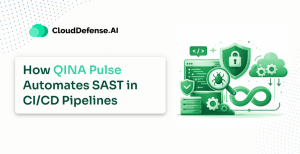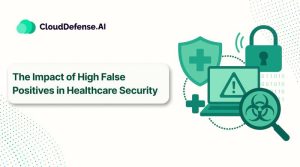The Internet Archive, a cherished online library, faced a massive cyberattack, leaving the site offline and visibly altered. Brewster Kahle, the founder of the nonprofit organization, confirmed that the trouble began when the site was hit by a series of DDoS attacks, causing major disruptions.
Things took a serious turn as users began reporting ominous pop-ups stating the platform had been hacked. With personal data from 31 million accounts compromised, the breach has sparked serious concerns over user privacy and the security of this trusted digital resource.
What is Internet Archive, and What Went Wrong?
The Internet Archive, famous for its “Wayback Machine” that lets you explore snapshots of websites from the past, recently found itself in the middle of a serious security incident. A hacker managed to break into the platform and made off with a database containing 31 million user records, sparking a wave of concern over the safety of user data.
News of this alarming breach started to spread when users visiting archive.org were greeted with a troubling JavaScript alert from the hacker. The alert boldly stated that the Internet Archive had been compromised and even taunted users, suggesting the site was always on the verge of a major security failure.
The pop-up message read: “Have you ever felt like the Internet Archive runs on sticks and is constantly on the verge of suffering a catastrophic security breach? It just happened. See 31 million of you on HIBP!”
This message referenced – Have I Been Pwned (HIBP), a service that allows individuals to check if their email addresses have been involved in a data breach. The incident has raised serious concerns about the security measures in place at the Internet Archive and the potential risks faced by its users.
Reason for the Breach
The recent breach at the Internet Archive can be traced back to a series of distributed denial-of-service (DDoS) attacks that started earlier in the week. These attacks aimed to overwhelm the site with excessive traffic, creating chaos and making it harder for users to access the platform. Unfortunately, this disruption also revealed vulnerabilities that hackers could exploit.
Internet Archive’s Response to the Attack
In response to the attack, the Internet Archive took quick action to protect its users. They disabled their JavaScript library, cleaned up their systems, and ramped up security measures. Unfortunately, these efforts weren’t enough to keep the attackers at bay.
Early Thursday, Brewster Kahle, the founder, announced that the DDoS attackers were back, taking down not just the main Internet Archive site but also the Open Library and Wayback Machine. As a result, all three platforms became unreachable, leaving users without access to vital resources.
Confirmation of Compromised Accounts
Adding to the concern, a post from Have I Been Pwned (HIBP) confirmed that 31 million accounts were affected by the breach. Troy Hunt, the site’s founder, stated he received a hefty 6.4 GB database file from the attackers. Alarmingly, more than half of the email addresses in this database had already shown up in previous data breaches.
The compromised information included screen names, email addresses, and hashed passwords, with 54% of the email addresses already listed in Have I Been Pwned’s database. This situation raises serious concerns about the security of user data and the ongoing risks for those affected.
Potential Reasons Behind the Breach
Weak Security Measures
The Internet Archive’s situation shows that their security measures weren’t as strong as they needed to be. Even after they tried to tighten things up, they still fell victim to a sophisticated attack. This underscores a vital lesson for all organizations: security isn’t a one-time fix. It requires ongoing effort and constant updates to stay ahead of potential threats.
DDoS Vulnerabilities
DDoS attacks do more than just disrupt service; they can expose weaknesses within a system. When a site is flooded with traffic, it can struggle to maintain its defenses, making it easier for hackers to slip through the cracks. Organizations need to ensure their security measures can handle such traffic spikes without compromising their overall safety.
Outdated Infrastructure
The comment about the Internet Archive “running on sticks” points to a bigger issue: their infrastructure may not be keeping up with modern security needs. As cloud and application security experts, we know that relying on outdated systems can create significant risks. Regularly reviewing and updating technology is essential for safeguarding against potential threats.
Exposure of User Data
Losing 31 million user records is no small thing. This breach not only compromises individual privacy but also erodes trust. Organizations need to implement strong encryption practices and user authentication measures to safeguard sensitive information.
Awareness and Preparedness
Cybersecurity isn’t just a tech issue; it’s about people, too. Organizations must cultivate a culture of awareness where employees know how to recognize and respond to potential threats. Regular training and drills can keep teams prepared and alert.
Third-Party Dependencies
If the Internet Archive relied on third-party tools or libraries, vulnerabilities in those components could have played a role in the breach. Companies should always evaluate the security of external services and understand how these dependencies can impact their overall security posture.
How CloudDefense.AI Can Help Prevent Such Breaches
In the wake of incidents like the Internet Archive breach, organizations need to rethink their approach to security. CloudDefense.AI provides a comprehensive suite of tools to help protect against such vulnerabilities and strengthen overall security posture. Here’s how we can help:
Strict Access Control
Not everyone in your organization needs access to everything. With our Cloud Infrastructure Entitlement Management (CIEM) solution, we enforce strict controls over who can access what, making sure users only see the resources they really need. As part of this, we incorporate multi-factor authentication (MFA) detection to further protect against unauthorized access. This way, you not only keep your resources secure but also reduce the chances of vulnerabilities, making your organization safer overall.
Data Security
If sensitive data isn’t encrypted, it becomes vulnerable to exposure during a breach. In incidents like the one at the Internet Archive, unprotected data can be easily accessed and exploited by attackers.
At CloudDefense.AI, we continuously monitor your systems to ensure that sensitive data, such as PII, is fully encrypted. If any unencrypted or exposed data is detected, we immediately alert you, helping you address vulnerabilities before they are exploited.
Policy Review and Enforcement
Having a data protection policy isn’t a one-and-done deal. We help you regularly review and update your policies, keeping you in line with the latest regulations. But it’s not just about having policies in place—we make sure they’re strictly enforced, with no exceptions. This ensures your data remains secure and compliant, no matter how things change.
Attack Path Analysis
Our attack path analysis identifies hidden vulnerabilities that could jeopardize sensitive data. We utilize advanced techniques to map out potential attack vectors, revealing weaknesses in your security posture. This way, you can address issues before they lead to a breach, keeping your organization safer and more secure.
Regular Security Audits
We offer regular security audits and compliance management, ensuring your organization meets all necessary standards. With customized compliance frameworks, we help you stay up-to-date with the latest regulations, identify potential risks, and address them before they become critical issues.
Final Thoughts
The recent breach at the Internet Archive serves as a wake-up call for everyone who runs their business in the cloud. It doesn’t matter how prominent or well-known your organization is; vulnerabilities can exist anywhere.
With CloudDefense.AI by your side, you can take proactive steps to prevent breaches before they happen. Our CNAPP offer a comprehensive suite of code-to-cloud security solutions that’s not only robust but also adaptable to whatever challenges come your way. This way, you can focus on what truly matters—growing your business—without the constant worry of your data falling into the wrong hands.
Ready to take the next step? Book your free demo today and see how CloudDefense.AI can transform your security strategy!







